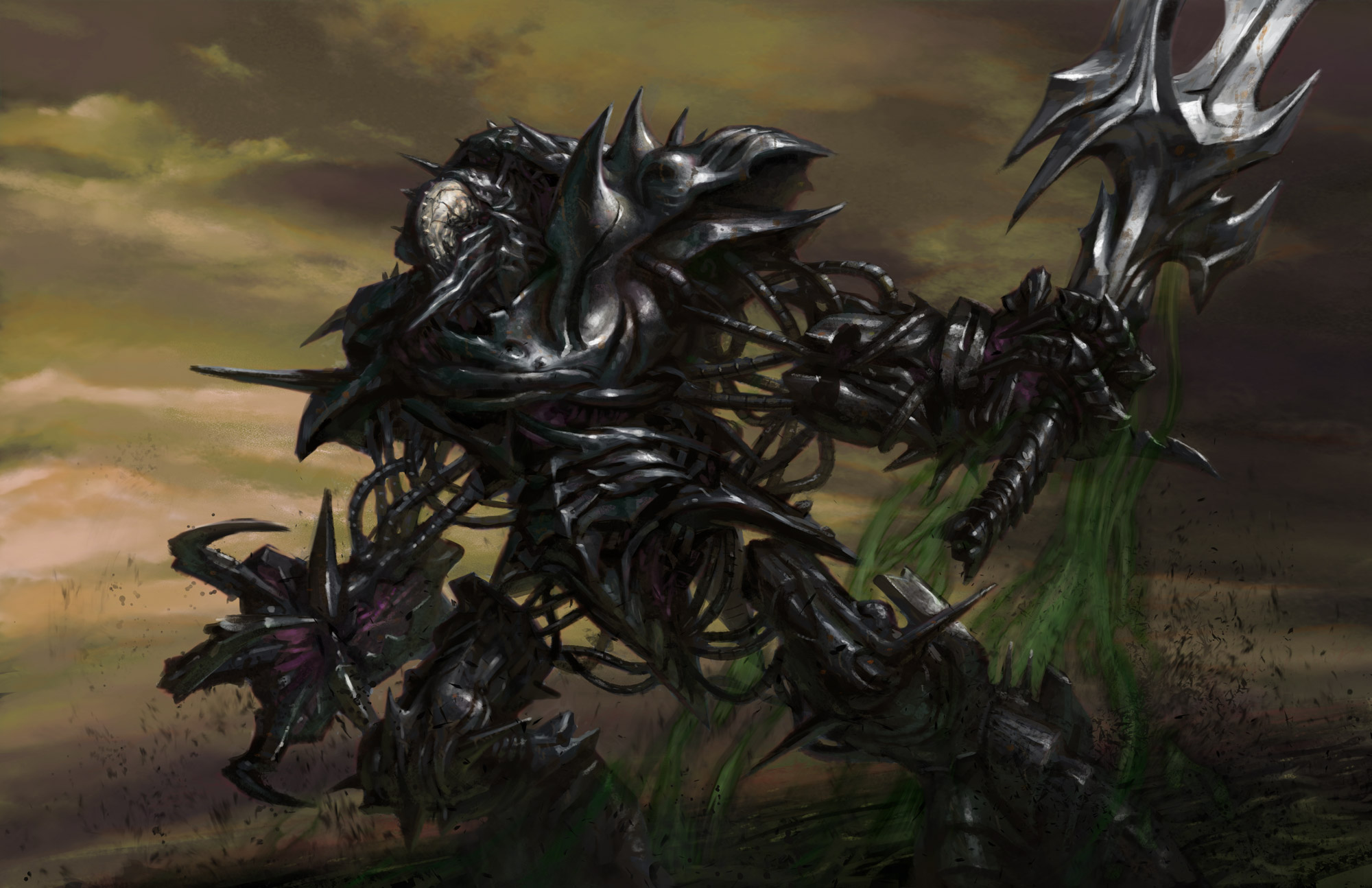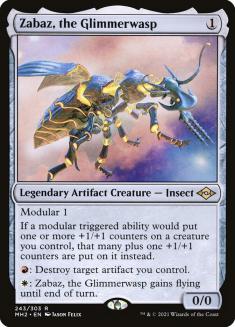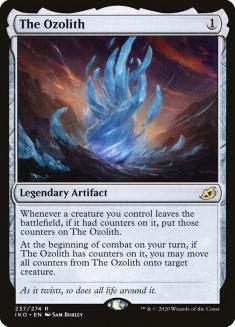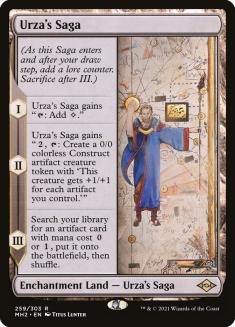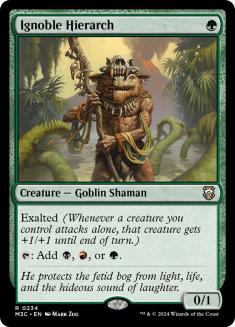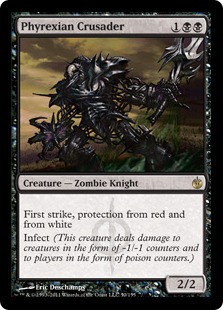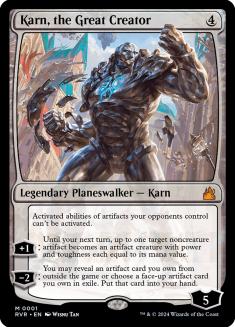After months of fair, midrange decks dominating Modern, we finally had a return to the format’s roots with a weekend where linear strategies of many flavors were well-represented at the top tables of CFB Las Vegas. Archetypes we haven’t seen in quite some time re-emerged, most with some notable changes, signaling to everyone looking to gain even more of an edge in Solitude mirrors that they need to keep their decklists honest.
It’s no surprise at this point that recent printings for the format have been biased towards fair strategies. Powerful new interactive cards like Force of Negation and Prismatic Ending have made it much easier to keep linear decks in check, but they can still exploit holes in the metagame when players bias their lists to win fair mirrors.
This leaves the metagame in an interesting position. Not all of the linear decks that emerged or re-emerged last weekend are going to stick around. And you can’t prepare for all of them going into this weekend. As someone with plenty of experience piloting linear strategies, especially in Modern, I’m here to let you know which of these decks are legitimate threats, and which ones are flashes in the pan.
Now, I’m going to be covering those linear archetypes that were relatively new last weekend. Mono-White Hammer is an established, Tier 1 archetype that you have to prepare for week after week and decks like Gruul Belcher and Golgari Yawgmoth have enough of a pedigree over the last few months that I would place them solidly into Tier 2. So I won’t be covering those decks. Instead, let’s take a closer look at the dark-horse linear strategies looking to get back into upper echelons of the Modern metagame.
Hardened Scales – Sell
Creatures (21)
- 4 Arcbound Ravager
- 2 Arcbound Worker
- 4 Hangarback Walker
- 4 Walking Ballista
- 4 Zabaz, the Glimmerwasp
- 3 Ingenious Smith
Lands (23)
Spells (16)

In the interest of full disclosure, I’ve never been a fan of this deck. Years ago it was the Mox Opal deck that was the worst at actually enabling Mox Opal, leading to a lot of awkward draws mixed in with some of the best nut draws in the entire format. Since Mox Opal’s ban, the deck has slowed down a bit, but the additions of Zabaz, the Glimmerwasp; The Ozolith; and of course Urza’s Saga have made it much more resilient.
However, that isn’t enough for me to change my opinion on this deck for two reasons. First is that its namesake card, the key card to the engine, is much easier to answer than it used to be. Turn 1 Hardened Scales used to be among the scariest starts in all of Modern, and now it’s too often neutralized by a Prismatic Ending. This deck is on a completely different level without Hardened Scales on the battlefield, and it being relatively difficult to answer was an underrated key to its success.
Those other additions certainly help make the deck better in non-Scales games, but I don’t want to depend on winning a high percentage of them.
Second is the fact that this deck isn’t doing anything that Hammer isn’t already doing. The synergies are a little different, but the strategy is very similar and they’re relatively the same speed. There’s more card advantage in Hammer lists, while Hardened Scales gets access to Walking Ballista for some interaction against opposing creatures and planeswalkers.
With how Modern looks right now, I’ll take the additional card advantage in that trade-off. Ballista is a great tool in the Hammer matchup itself, but across the metagame, that removal isn’t as valuable as the added resiliency against opposing removal. So I can’t advocate playing Hardened Scales over Hammer, even if they’re relatively similar decks.
Sultai Infect: Buy
Creatures (20)
Lands (20)
Spells (20)

This may come as a surprise given that I just criticized Hardened Scales as a worse version of the Hammer decks, and you’re not entirely off base. Infect operates on a very similar axis but without nearly the amount of card advantage. But I think this particular list makes some major improvements to the archetype that will carve out space for it in the metagame, and it comes from the addition of these two cards:
First, Ignoble Hierarch is a bigger addition than you might think. Yes, it’s mostly copies five through eight of Noble Hierarch with the necessary mana fixing to enable Crusader, but what you have to understand is that in classic Simic Infect, Noble Hierarch was the best card in the deck. The number one mistake I think players made against Infect was not killing a Turn 1 Noble, instead trying to save removal for infect creatures only. Infect wins games by generating a mana advantage on a key turn and essentially winning a counter war because all of its spells cost zero or one mana. Having additional copies of your mana creature makes that much easier.
Now, winning those counter wars is much harder in a world of Solitude and Unholy Heat, and a more consistent mana advantage will only go so far. That’s where Phyrexian Crusader comes in. The balance of removal has shifted away from black and towards white and red, making Crusader near-impossible to kill. Across the 56 published decklists from major Modern events last weekend, there were three copies of Fatal Push. And while Urza’s Saga decks have Pyrite Spellbomb, which answers Phyrexian Crusader on paper, in reality it’s trivial to play around most of the time.
So these two additions gave the deck much-needed buffs in consistency and resiliency, respectively. Combine that with the fact that speed has always been Infect’s strongest attribute, and you have a recipe for success for a linear strategy, especially in metagames that are higher in linear decks like Modern is right now. I wouldn’t recommend you play Infect week-in, week-out for months on end, but it’s good enough to be a heady metagame choice on the right weekend.
Ad Nauseam: Sell
Creatures (4)
Lands (20)
Spells (36)

I was a big fan when Ad Nauseam moved away from its namesake card and instead became more of a Thassa’s Oracle deck, because it made the deck much less mana-hungry. I’ve long tried to attack their mana as a means of disrupting them, and that gets a lot harder when your key combo piece is two mana instead of five. With the addition of Profane Tutor for increased consistency, this deck looks much-improved on paper. But I’m not sold.
While its combo got cheaper, it’s now a three-card combo instead of two. You need Spoils of the Vault to empty your library, Angel’s Grace or Phyrexian Unlife to survive the Spoils, and Thassa’s Oracle to win the game. With eight copies of one of those cards and several tutors, that may not seem like a big deal, but in the face of Modern-level disruption it is. So the supposed consistency gain from the addition of Profane Tutor isn’t adding to the deck so much as compensating for the move to Thassa’s Oracle. It’s a lateral move at best.
Profane Tutor also worries me because of how popular Teferi, Time Raveler is right now. Ad Nasueam already has a key suspend card in Lotus Bloom and no maindeck answer to the powerful planeswalker. And neither Profane Tutor nor Lotus Bloom can possibly come off suspend before your opponent has an opportunity to cast Teferi, provided they make their land drops. It’s just a matter of crossing your fingers and hoping it works.
The end result is a deck that I think is just worse than Gruul Belcher. Belcher is faster, more consistent, and has a similar level of versatility now that they’ve incorporated the Pyromancer Ascension package with Recross the Paths. Ad Nauseam’s new additions have made it better in some aspects, but worse in others, and that’s not enough with how much the rest of the Modern metagame has improved over the last two years.
Dredge: Sell
Creatures (21)
Lands (18)
Spells (21)

Please join me in observing a moment of silence for my departed friend.
…
Thank you.
I remember the days when Dredge was the most-feared deck in all of Modern. Faithless Looting was still around and few decks could match Dredge’s combination of explosiveness and late-game power. Eventually, wave after wave of Prized Amalgams, Narcmoebas, and Bloodghasts would overwhelm your opponent, often backed up by a Life from the Loam-fueled Conflagrate.
With Thrilling Discovery alongside Cathartic Reunion the deck still has some explosive draws, and the duo of Otherworldly Gaze and Ox of Agonas lets you reliably play out of your graveyard once you’ve exhausted your opening hand, but what Dredge is doing in Modern just isn’t what it used to be. It’s a pile of creatures that if they come out early you can handle with Incarnations like Fury and Solitude, and those same cards provide plenty of card advantage alongside Omnath, Locus of Creation and/or Ephemerate. Reactive decks in Modern, which are the matchups Dredge has always thrived against, are much better-equipped to handle Dredge’s brand of explosiveness and resiliency.
I’m particularly worried by cards like Fury and Omnath that can dominate the battlefield in the late-game. That’s always been the secret for beating Dredge, because there isn’t much they can do to get around creatures that brick-wall their team. They rely on playing through wave after wave of removal spells with recursive threats, but that recursion doesn’t matter when the brick wall never leaves. Conflagrate was your insurance against those creatures, but the deck has been forced to move away from that in order to incorporate Darkblast to answer Ragavan, Nimble Pilferer and early threats from Hammer decks.
If you’re already a Dredge master, I could see playing this deck in metagames that are particularly low on graveyard hate, but I can’t recommend learning it until it gets a major new addition.
Amulet Titan: Sell
Creatures (13)
Lands (31)
- 4 Forest
- 1 Windswept Heath
- 1 Boros Garrison
- 1 Golgari Rot Farm
- 2 Selesnya Sanctuary
- 1 Sunhome, Fortress of the Legion
- 1 Gruul Turf
- 1 Breeding Pool
- 4 Simic Growth Chamber
- 1 Vesuva
- 2 Tolaria West
- 2 Valakut, the Molten Pinnacle
- 1 Slayers' Stronghold
- 2 Cavern of Souls
- 1 Radiant Fountain
- 2 Castle Garenbrig
- 4 Urza's Saga
Spells (16)

Amulet Titan has quite the pedigree in Modern. At times it’s been the undisputed best deck in the format. So you could argue that it doesn’t even belong in this discussion, and should be elevated into the automatic Tier 2 category. But even with its recent success and long history, I’m not sold.
For me, one of two statements must hold true in order for Amulet Titan to be a consistently viable deck. Either Primeval Titan needs to live consistently or the first trigger needs to be consistently enough to bridge you into a great end-game. The former has often varied with how prepared players are for Amulet Titan, but since the printing of Solitude and Unholy Heat, the metagame is now consistently prepared to remove a 6/6 creature.
The latter was part of the reason why Field of the Dead was so good in the deck. Your one Titan trigger was enough to get to an end-game of hordes of Zombies that never stopped coming. Now you have to rely on either Urza’s Saga, which is neither as fast or as reliable at taking over the game as Field of the Dead, or the combination of Valakut, the Molten Pinnacle and Dryad of the Ilysian Grove, the latter of which is easier to answer for the same reasons that Primeval Titan is.
Maybe I’m underselling how powerful the Urza’s Saga end-game is, but with how popular that card is, no player is going into a tournament without a plan to beat it. And not just a single copy, but oftentimes recurring copies via Wrenn and Six. I’d prefer if Amulet Titan had something unique going for it, but there’s nothing powerful enough available.
A lot of recent lists try to compensate for these issues by playing Karn, the Great Creator as an additional threat, but I hate that card in Amulet Titan, which is why I shared Musasabi’s list above that plays Explore over it. Without Mycosinth Lattice, Karn doesn’t reliably take over games, especially in a deck that doesn’t protect it well. Arboreal Grazer can only do so much on that front.
Moreover, Karn has no immediate impact as a threat until the late-game when you have enough mana to cast it and either Wurmcoil Engine or a sizable Walking Ballista on the same turn. When you’re spending your early turns ramping into your own threats instead of interacting, you need immediate impact from your threats, because you’re ceding the early-game advantage to your opponent. So I’d much rather play the card that gets you to six mana faster and gives you more draws towards Primeval Titan and Summoner’s Pact, since those cards are carrying the deck to wins.
Much like Dredge, I’m only recommending Amulet Titan to players with significant experience playing it already.
Oof, that’s not a great endorsement for linear decks in Modern. That said, the Mono-White Hammers, Gruul Belchers, and Golgari Yawmogths of the world are all solid choices for a varied metagame, so it’s not entirely doom and gloom. And in particularly midrange heavy metagames like we saw last weekend, all of the above decks can find success. Which is why I wasn’t surprised to see Rakdos Midrange (Lurrus) take down the trophy in Las Vegas, since it’s the midrange deck with the best combination of versatile disruption and pressure.
This isn’t the same Modern format that we had four or five years ago. Fair decks rule the roost these days, and as much as I like linear decks, that’s probably for the best. Midrange decks create dynamic metagames because they offer so many angles of attack against them and can adopt many angles of attack themselves. But I’m glad that there’s still some space where linear decks can succeed, because without them around to keep the midrange players honest, that dynamic metagame devolves into an arms race where every player tries to go bigger and bigger.
So while I don’t think these decks are going to be major players moving forward, the fact that they’re here at all is a good sign for the health of Modern.

